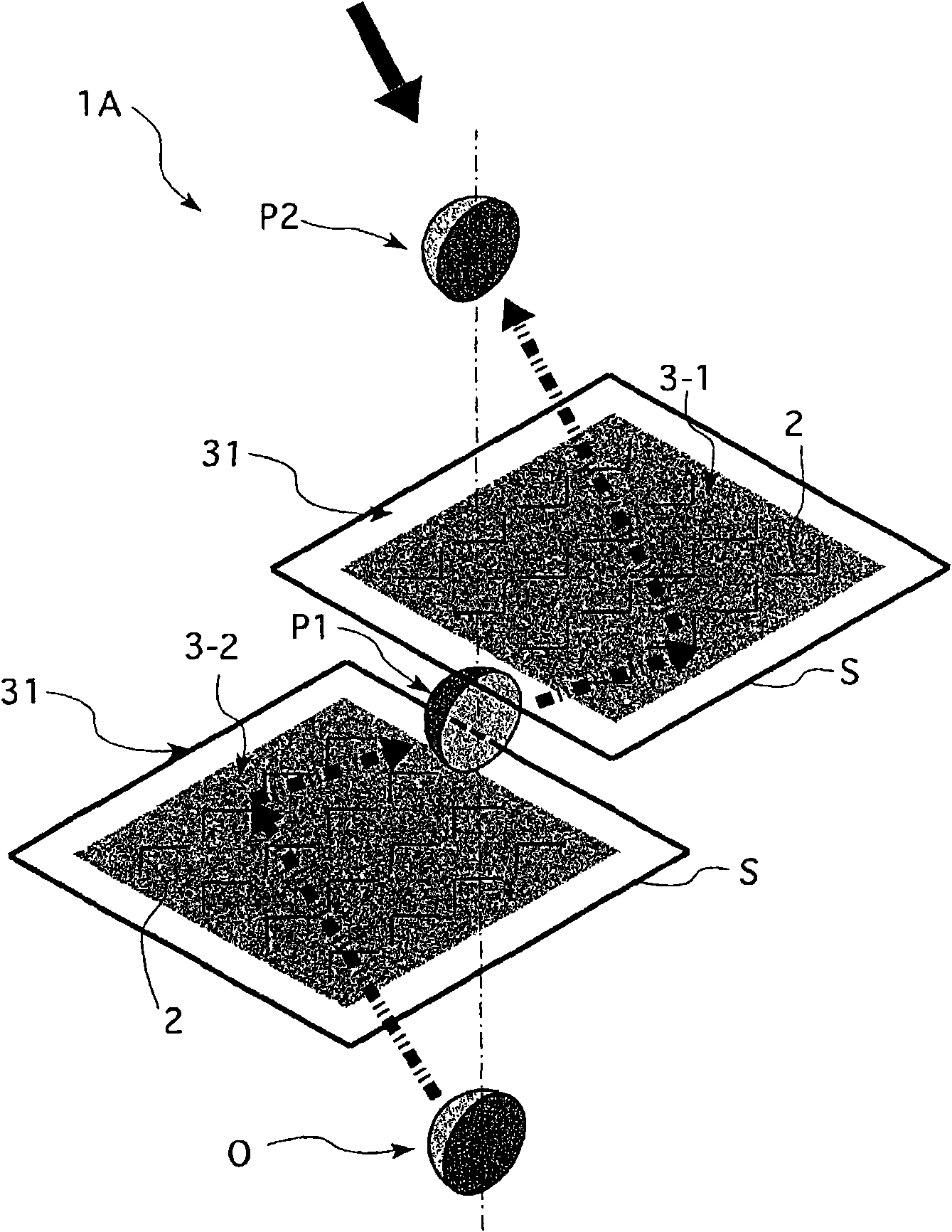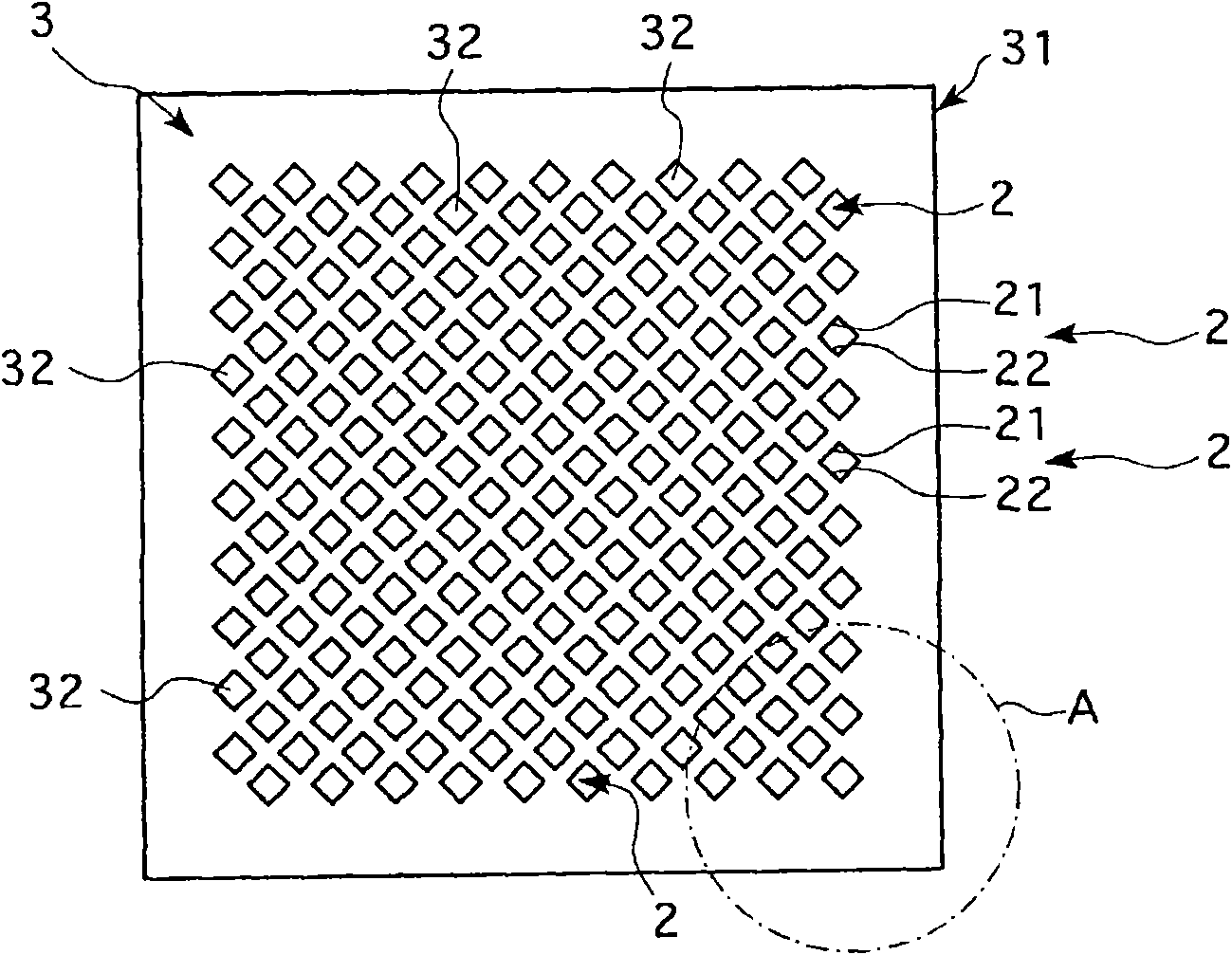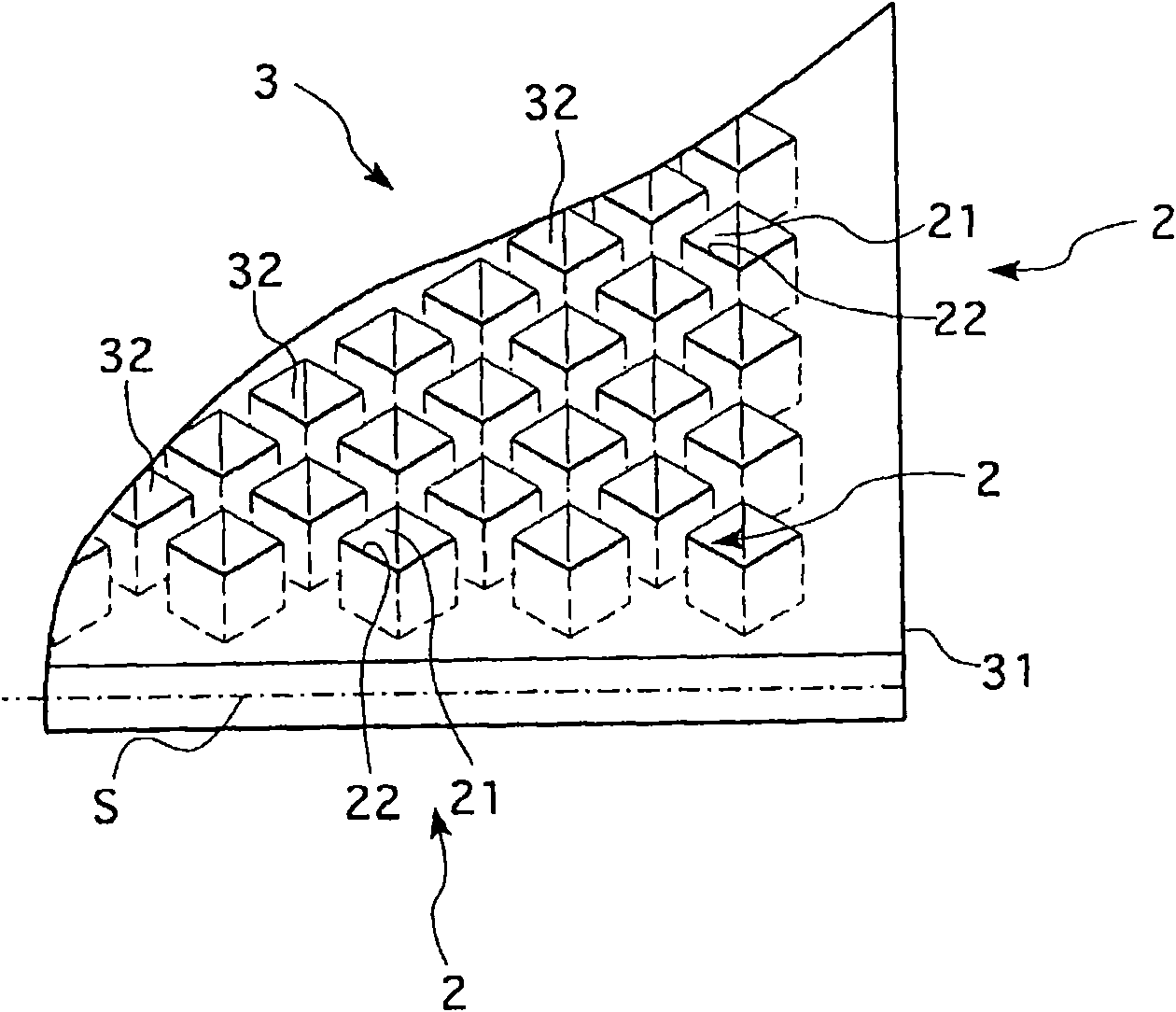Transmission optical system
An optical system and imaging optics technology, applied in the field of transmission optical systems, can solve problems such as observation position constraints and aberrations
- Summary
- Abstract
- Description
- Claims
- Application Information
AI Technical Summary
Problems solved by technology
Method used
Image
Examples
no. 1 approach
[0041] figure 1 The first embodiment shown is one of the basic forms of the transmission optical system of the present invention. That is, the transmission optical system 1A of the present embodiment uses two (reference numerals 3-1, 3-2) real-mirror image imaging optical systems (hereinafter referred to as "double-sided corner reflectors") equipped with a plurality of double-sided corner reflectors 2. reflector array") 3 to form a real image P2 having the same depth form (concave-convex) as the projected object O. The two double-sided corner reflector arrays 3-1, 3-2 are substantially identical. As shown in the figure, in this transmission optical system 1A, two double-sided corner reflector arrays 3 are arranged such that their element faces S, S are parallel to each other. In addition, since the double-sided corner reflector 2 is very small compared with the double-sided corner reflector array 3, in this figure, the entire collection of the double-sided corner reflectors ...
no. 2 approach
[0052] exist Figure 8 In the transmission optical system 1C of the second embodiment of the present invention shown as a side view in FIG. The element faces S, S of the double-sided corner reflector array 3 are not parallel to each other. Specifically, in the transmission optical system 1C of the illustrated example, four double-sided corner reflector arrays 3-1, 3-2, 3-3, and 3-4 are arranged sequentially away from the projected object O side, The first double-sided angular reflector array 3-1 and the second double-sided angular reflector array 3-2, the second double-sided angular reflector array 3-2 and the third double-sided angular reflector array 3-3, the third The double-sided corner reflector array 3 - 3 and the fourth double-sided corner reflector array 3 - 4 are respectively arranged with the element surfaces S and S inclined to each other. In addition, the imaging method in each double-sided corner reflector array 3 is the same as that described in the first embod...
no. 3 approach
[0060] exist Figure 10 In the transmission optical system 1D shown as a side view in , as an imaging optical system, two (reference numerals 4-1, 4-2) equipped with a half mirror 41 and a retroreflective element (hereinafter referred to as " The real mirror image imaging optical system 4 of the retroreflector array ") 42, thereby imaging the real image P2 having the same depth form (concave-convex) as the projected object O. In addition, the projection object O and the real image P ( P1 , P2 ) will be described using the same symbols as those in the above-described embodiments.
[0061] As the half mirror 41 , for example, a half mirror in which a thin reflective film is applied to one surface of a transparent thin plate such as transparent resin or glass can be used. In the half mirror 41, the surface that transmits and reflects light, that is, the half mirror surface S″ functions as a symmetrical plane in the transmission optical system 1D of the present embodiment. The a...
PUM
| Property | Measurement | Unit |
|---|---|---|
| Thickness dimension | aaaaa | aaaaa |
Abstract
Description
Claims
Application Information
 Login to View More
Login to View More - R&D
- Intellectual Property
- Life Sciences
- Materials
- Tech Scout
- Unparalleled Data Quality
- Higher Quality Content
- 60% Fewer Hallucinations
Browse by: Latest US Patents, China's latest patents, Technical Efficacy Thesaurus, Application Domain, Technology Topic, Popular Technical Reports.
© 2025 PatSnap. All rights reserved.Legal|Privacy policy|Modern Slavery Act Transparency Statement|Sitemap|About US| Contact US: help@patsnap.com



